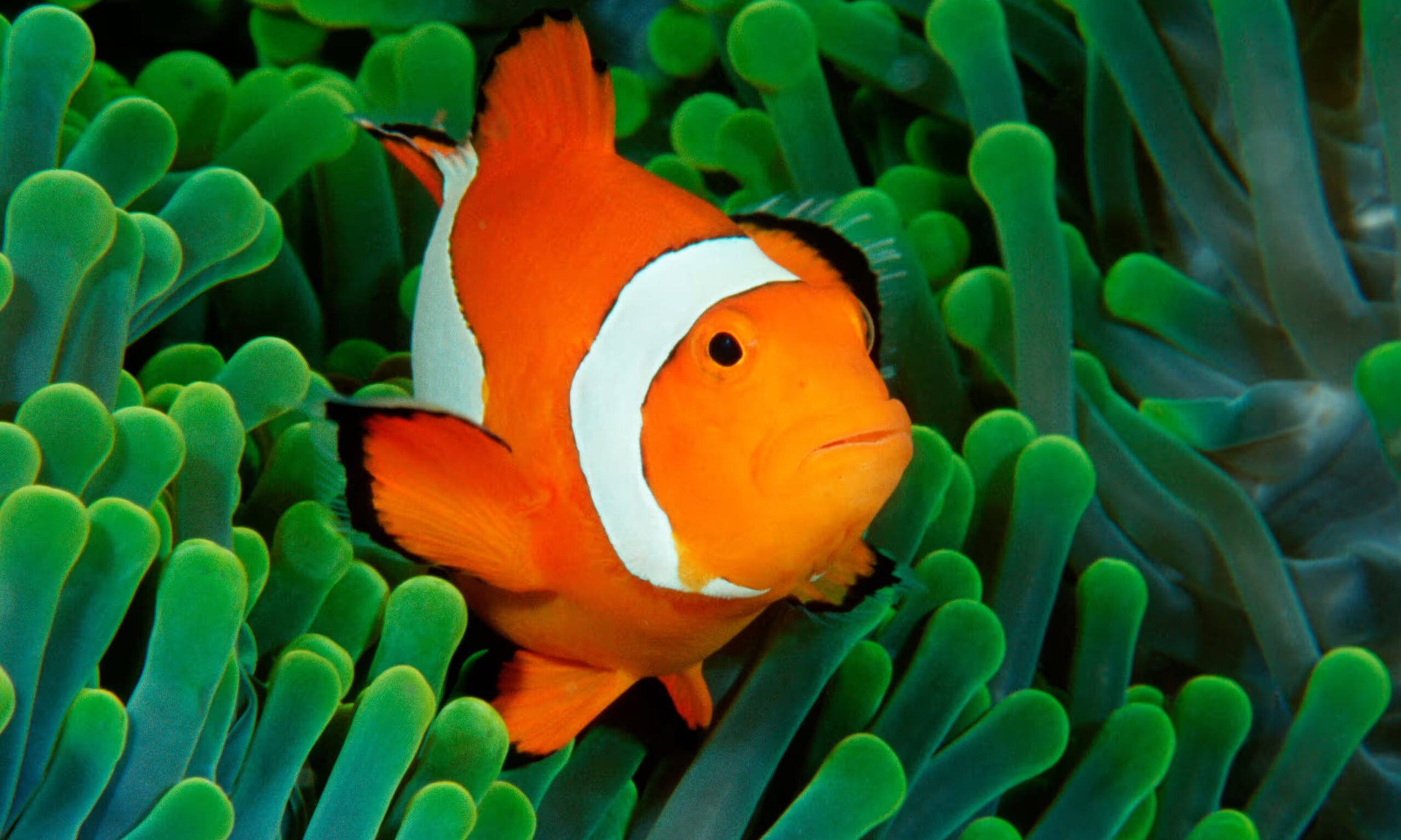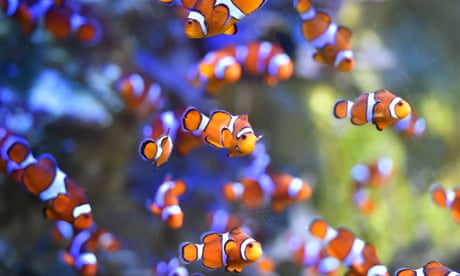 Experiments have shown common clownfish are more aggressive towards fish models painted with patterns like their own. Photograph: Wolfgang Polzer/Alamy
Experiments have shown common clownfish are more aggressive towards fish models painted with patterns like their own. Photograph: Wolfgang Polzer/Alamy
–
Published 2024 Feb 01
–
Researchers say they have found how anemonefish identify unwelcome guests of their own kind, by counting white markings
–
Unlike the star of Disney’s Finding Nemo, real-life common clownfish are not keen on sharing their home with members of their own species.
Researchers say they have discovered how they kick unwelcome guests out, by counting the stranger’s vertical white markings.
According to previous research, the sea anemones that house common clownfish can also be a temporary home for other species – provided they have horizontal stripes or no stripes at all.
However, common clownfish do not tend to cohabit with fish that have vertical markings like their own, instead experiments have shown they are more aggressive towards fish models painted with such patterns.
Scientists have now found that it is not just the presence of vertical stripes, but their number that helps the common clownfish recognize its peers.
Dr Kina Hayashi, of the Okinawa Institute of Science and Technology, first author of the research, said: “Perhaps there are other factors besides the white vertical lines that are important in discriminating the same species.
“But this experiment at least suggested that the number of white vertical lines is important in discriminating the same species and deciding whether to attack or not.”
Writing in the Journal of Experimental Biology, researchers in Japan describe how they took young common clownfish that had never seen other species and placed a small see-through case inside their tanks. The case contained either a fish of the same species – boasting an orange body with three vertical white stripes – or another species of clownfish with different markings.
The results revealed the common clownfishes showed a greater number and frequency of aggressive behaviors towards members of their own species than towards the orange skunk clownfish – which has only a single white horizontal stripe down its back. However, no significant differences in behavior were seen towards other species of clownfish that all had one or more vertical stripes.
The team then exposed common clownfish to model fish painted orange with either no, one, two or three vertical white stripes.
The scientists found the frequency of aggressive behavior by these groups towards the model was far lower when painted with no stripes, compared with the striped models.
However, based on the behavior of individuals, the team found the fish were more aggressive towards the model with three vertical stripes than one stripe.
Hayashi said the results are interesting as the ecological role of the white stripe pattern in clownfish – also known as anemonefish – had not previously been clear.
“This result support[s] the notion that anemonefish are able to discriminate between different numbers of white bars, and the differences in the number of white bars helps anemonefish distinguish their own species,” she said.
–



















